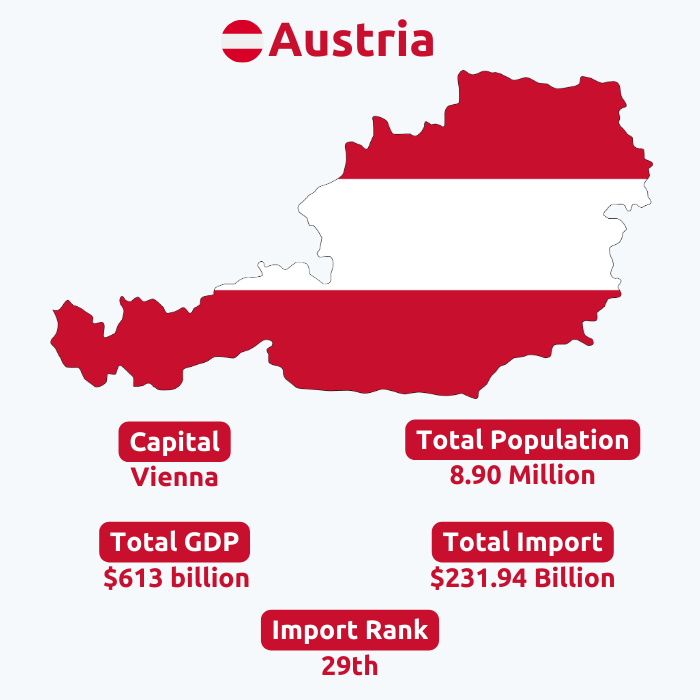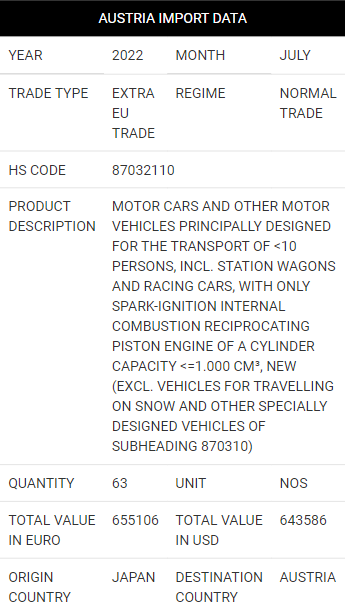Sample Data
Understanding Austria's Import Data
We obtain trustworthy data from organizations, shipping businesses, and customs ports. This Trade Data
contains a wide range of fields, such as HS codes, product descriptions, prices, quantities, origin country,
destination country, and port names together with currency values. For traders and marketers, this trade data is
crucial information that helps them to make informed decisions. From the HS codes and product descriptions to
the quantity and cost of each product, everything can be obtained through this trade data.
We have included a sample of this trade data for your convenience and greater understanding so
that you can see what the trade data looks like as a whole, with complete details.
So, as you can see in this statistical report, we also include the number of goods needed to be imported/exported, HS codes, the description of each HS code, and the quantity and price of each product from the country's shipment data. In this comprehensive statistical database, we ensure that every detail is meticulously recorded, which makes this trade data efficient for businesses worldwide.
Austria's import data refers to detailed information about the goods and services imported into the country. It includes various metrics such as the quantity, value, origin, and destination of the imports. This data is collected and compiled by government agencies and trade organizations, providing a comprehensive overview of Austria's import activities. Moreover, policymakers and economists rely on import data to analyze and formulate policies that promote sustainable economic growth. Based on Austria’s import data, Austria imported goods with a total value of $231 billion in 2022, with an increase of 5.92% as compared to 2021.
The information you are given on import and trade data from Austria is highly helpful and informative. The most recent shipping bills, invoices, and other crucial trading documents serve as the foundation for the import data. You will receive trustworthy information from Austria's accredited ports, organizations, and other shipping firms. HS codes and product descriptions, which comprise the amount, units, and price of each product being sent, are among the many fields that are included in Austrian import data.





